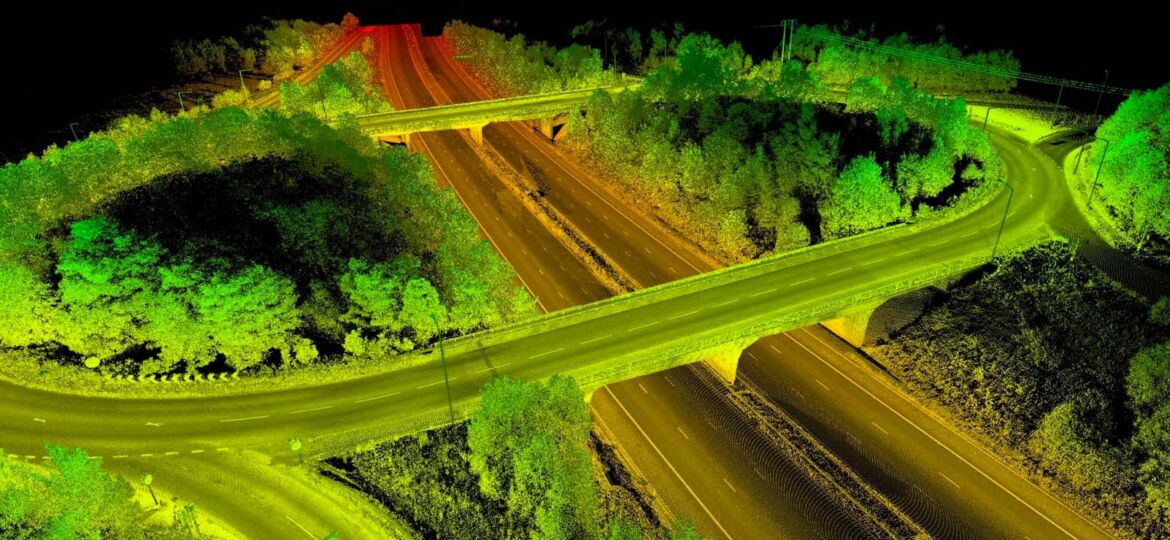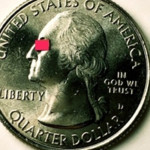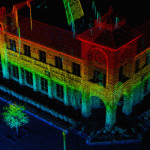
WHY THIS MATTERS IN BRIEF
- Most of the new smart things that we are creating rely on sensors to map, move around and interact with our world, and LiDAR is a key sensing technology that helps things see, Velodyne’s new product will accelerate the creation of smart, autonomous things
Last week Velodyne, the world leader in advanced sensor systems, announced a groundbreaking new miniaturised, solid state LiDAR sensor that it can sell out for under $50 – and if you’re wondering why this is such big news then it’s not only because LiDAR sensors, which play a key part in helping the car map, or “see,” its surroundings, play an integral role in helping make today’s autonomous vehicles possible, but it’s also because, until now, the LiDAR systems used by most manufacturers are huge, ugly and cost up to $30,000 each.
In short, not only will these new sensors be more reliable and easier to integrate than their older mechanical counterparts, but they’ll also help autonomous vehicles look more “normal” – such as Ford’s latest Fusion Hybrid, who recently invested over $150 million in Velodyne as they prepare to roll out their autonomous fleets in 2021 – by helping to get rid of the large batteries of arrays that you often see strapped to their rooves. And as if all of that wasn’t enough then their biggest party trick? They’re going to make buying an autonomous car much, much more affordable.
It’s a small change that makes a world of difference, and the new products applications will go way beyond just autonomous vehicles. They’ll be a boost for ride sharing, 3D mapping, consumer robots and new military applications but more excitingly they’ll finally help to bring some of the same hi-tech sensing technologies found in cars to the drone market where many companies, including DJI and Skydio, for example, are already experimenting with autonomous drones and where companies like Uber and Airbus are experimenting with autonomous sky taxis.
“Our new design approach creates a true solid state LiDAR sensor, while significantly raising the bar as to what can be expected from LiDAR sensors as far as cost, size, and reliability,” said David Hall, founder and CEO, Velodyne LiDAR, “together with our customers and partners, we strive to create a world where LiDAR sensors increase safety and freedom for people everywhere, and this new design is a huge step in that direction.”
In order to develop the new product Velodyne used a monolithic gallium nitride (GaN) integrated circuit which was developed in partnership with Efficient Power Conversion (EPC) and consolidated and collapsed some of the existing components found in their traditional LiDAR sensors to create an integrated circuit that is less than 4mm square – which just covers George Washington’s nose on the US quarter.
“As LiDAR technology continues to gain widespread adoption, GaN technology brings higher performance resulting in higher image resolution, all while offering enhanced integration of key functions that ultimately lead to reduced overall cost for LiDAR-based system solutions,” said Dr. Alex Lidow, CEO and co-founder of Efficient Power Conversion.
“Velodyne’s decades of LiDAR expertise places it in the best position to define and develop power and performance optimized integrated circuits specific to LIDAR,” added Anand Gopalan, Vice President of Research and Development, Velodyne LiDAR, “this technology really opens the door to miniaturization and gives Velodyne the ability to build LIDARs in various form factors for many diverse applications. We will soon have a portfolio of integrated circuits to address various aspects of LIDAR functionality, paving the way to a whole new generation of reliable, miniaturized, and cost-competitive LIDAR products.”
Velodyne LiDAR’s design is currently being tested and integrated into future products, and a release date announcement will be made in 2017.





















[…] Her teknolojinin farklı şartlarda farklı avantajları var. Ancak teknoloji hızla gelişiyor ve kazanacak olan teknolojiyi ilan etmek için henüz erken gibi görünüyor. 2017’in başında Ford ve Baidu, LiDAR üreticisi Velodyne’a 150 milyon dolarlık bir yatırım yaptılar ve bu yatırımın hemen ardından firma şu ana değin onbinlerce dolar fiyat etiketi olan LiDARlar yerine 50 dolara mal edilebilecek yeni bir ürününü duyurdu. […]